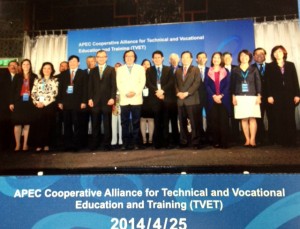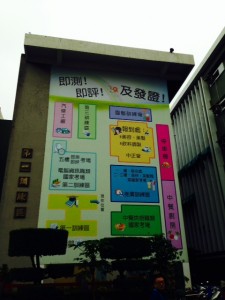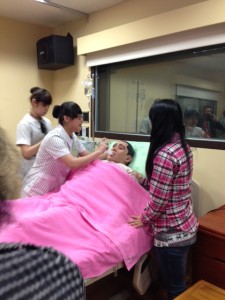
Last week, I had the honor as serving as a delegate at a conference held by the Asian-Pacific Economic Cooperative (APEC) Alliance for Technical and Vocational Education and Training in Taipei, Taiwan. Along with education and government leaders from Taiwan, the Philippines, Malaysia, Thailand, Japan, Korea and Vietnam. This event was co-hosted by Taiwan’s Ministries of Labor and Education and Taipei Tech University.
One thing that struck me was the similarity in our challenges and the goals of our CTE/vocational education and training systems. Nearly every leader spoke of high youth/young adult unemployment, an aging population, the disconnect between what students are learning in school and the skills demanded in the workforce, and the need to upskill our systems. Other countries are also struggling with raising the image of CTE – the representative from Thailand, for example, noted that they refer to this challenge as “3D” in that the jobs are considered “dangerous, difficult and dirty.” While the language and solutions might vary across countries, the role of CTE as a driver of economic development and vitality was something we all had in common.
 On the second day of my trip, I had the opportunity to visit two models of technical institutions, the Chinese Culture and Social Welfare Foundation Vocational Training Center (CVTC) and Chung Gang University of Science and Technology (CGUST). CVTC is a privately-run, publicly-subsidized institution that provides training (ranging from 300-900 hours) to unemployed individuals in areas such as culinary arts, gardening/landscaping, webpage design and computer maintenance.  CVTC is one of 13 public training centers in Taiwan – and was the first training center established over 50 years ago. Like most other training centers in Taiwan and the other Asian countries represented at this conference, CVTC provides on-site certifications. (See a map of their campus to the right)
On the second day of my trip, I had the opportunity to visit two models of technical institutions, the Chinese Culture and Social Welfare Foundation Vocational Training Center (CVTC) and Chung Gang University of Science and Technology (CGUST). CVTC is a privately-run, publicly-subsidized institution that provides training (ranging from 300-900 hours) to unemployed individuals in areas such as culinary arts, gardening/landscaping, webpage design and computer maintenance.  CVTC is one of 13 public training centers in Taiwan – and was the first training center established over 50 years ago. Like most other training centers in Taiwan and the other Asian countries represented at this conference, CVTC provides on-site certifications. (See a map of their campus to the right)
 CGUST, on the other hand, is a private four-year institution that provides training for health care professionals through its College of Nursing and College of Human Ecology. This campus features state-of-the-art simulation equipment, an on-site kindergarten class run by students and staffed by nurses (who also happen to be instructors), and one of the highest placement rates for its graduates.  All students participate in professional internships during summer breaks and about 87% pass their professional certification, which is twice Taiwan’s national average.
CGUST, on the other hand, is a private four-year institution that provides training for health care professionals through its College of Nursing and College of Human Ecology. This campus features state-of-the-art simulation equipment, an on-site kindergarten class run by students and staffed by nurses (who also happen to be instructors), and one of the highest placement rates for its graduates.  All students participate in professional internships during summer breaks and about 87% pass their professional certification, which is twice Taiwan’s national average.
All in all, the trip was an eye-opening experience that brought our own CTE system – and its strengths and ongoing challenges – into focus.
Kate Blosveren, Associate Executive Director

